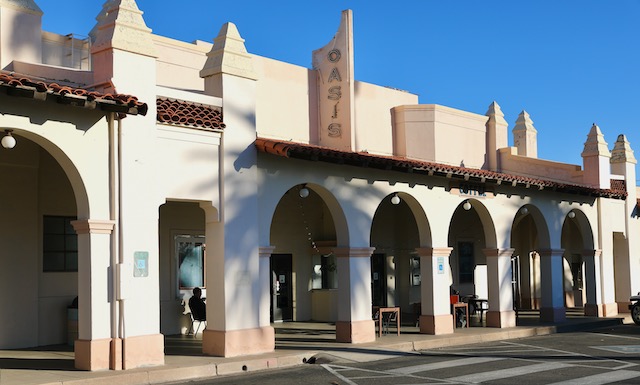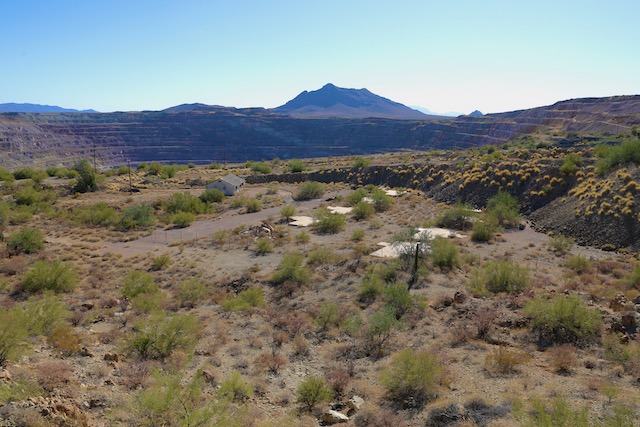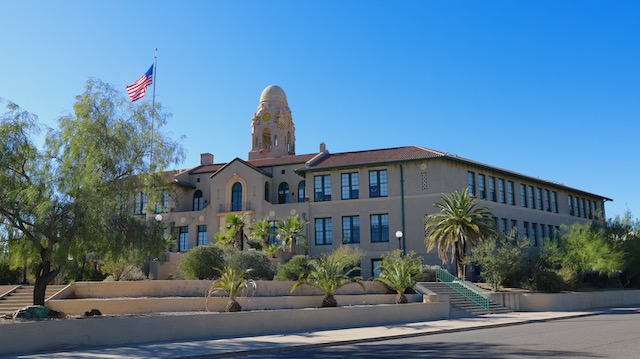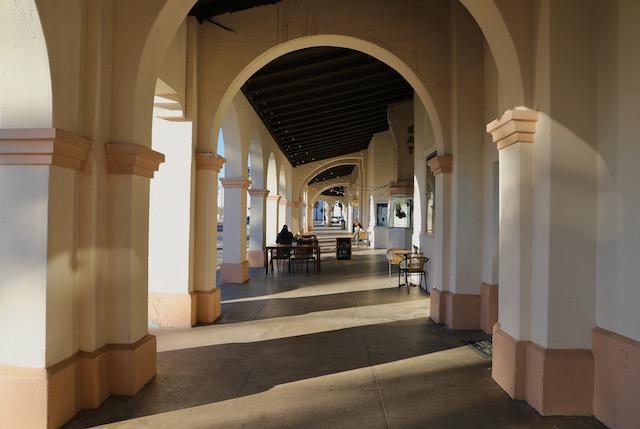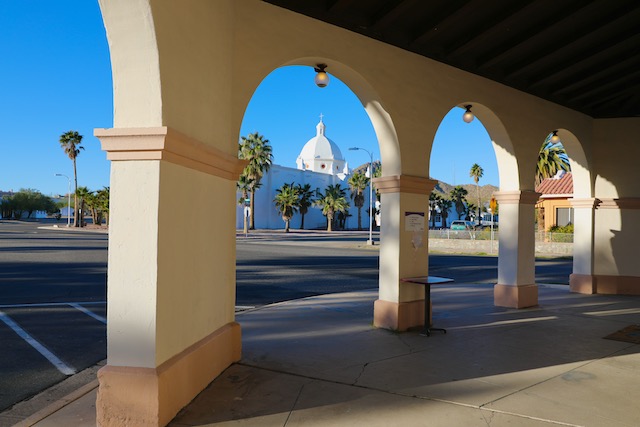The City Beautiful Movement In The Remote Arizona Desert
A Capitalist & Racist Company Mining Town – But Designed In Style
Places To Live, Places To Thrive
About 42 miles south of Interstate 8 in western Arizona – down Arizona Rt 85 through the US Air Force’s Barry Goldwater Bombing Range – one comes across a tiny oasis in the vast desert.
After miles of driving through desolate desert, one comes across a green Oasis, with splendid Spanish revival architecture, a green palm tree lined grassy square, and magnificent churches.
The place is called Ajo – a superb example of the City Beautiful Movement and the only one in Arizona (curious that I was taught about this movement at Cornell Graduate School 40 years ago as basically an historical artifact of some ludicrously naive and misguided aesthetic design attempt at social improvement).
We’ve previously written about and posted several photographs of Ajo (i.e. see this on murals and this on indigenous protest on Trump Border Wall desecration of scared sites and this on local politics).
But we remain enchanted with the place and want to present more.
The town was designed and built by a capitalist copper mine owner named John Greenway, who brought in a Minnesota planning firm that designed the place based on City Beautiful Movement principles.
According to the National Historical designation:
In contrast to the haphazard construction of early mining towns across the American west, Ajo was built from a formal master plan vision. The plan created elegant public spaces where the community could come together, but at the same time enforced the physical segregation of people in the community….
Not everyone benefited equally from Ajo’s grand design. Housing was segregated by ethnicity and status. Anglos who oversaw mine operations were offered numerous styles and locations of homes, while Mexican laborers were offered a single choice within the “Mexican Townsite”. Native American mine workers were left to find their own housing outside the town center.
Here’s what the “Mexican Townsite”, located on the edge of the mine, now looks like – family homes demolished and only the slabs remain:
Here’s what a white mine manager’s home looked like – still standing in the historic district (I almost bought the lovely place):
And here’s what the school looks like (now an artist’s colony): (clarification: I’m not sure if the public schools were segregated like the neighborhoods were)
The capitalist exploitation of labor and the racist segregation policies were practiced right out in the open, for all to see.
But it is the enduring rich visual beauty that explodes these multiple historic, economic, and cultural contradictions.
I’m sure you”ll agree that this is one of the most delicious places to have one’s morning coffee:
Ajo is a superb and enduring example of City Beautiful design:
And there is a wonderful local media and bookstore as well:
We sorely miss the morning routine of coffee and good conversation – especially with our Canadian friends – at the Oasis Coffee Shop.
COVID has us isolated out in the Sonoran desert.
Surely, we can recreate a 21st Century City Beautiful Movement as the design and functional aesthetic for a new post climate catastrophe community (without the capitalist exploitation of labor, the racist segregation, and the extractive ecologically insane economy – and military madness and border wall construction).
[End Note: (Historic District designation)
There is no doubt that mining built this town, once the nation’s third largest producer of copper. There is the inescapable presence of the pit, slag heaps, smelter, tailing ponds and cluster of aluminum-corrugated buildings as a reminder of the mining operation. There is also the inescapable reminder that the support settlement, with its ample streets radiating out from its town center – a verdant, palm-lined plaza surrounded by a colonnaded business block in the Spanish Colonial Revival style – was a deliberately planned community based on strong principles of beautification and social responsibility. With the closure of the New Cornelia mining operation by the Phelps Dodge Corporation in 1984, the drone of trains, smoking of the smelter stacks, rumblings of heavy equipment, and frequent dynamite blasts ceased. At that time, the population of the town of Ajo, which has fluctuated greatly over the years owing to its direct relationship to the copper industry, dropped from 6,000 to less than half that number. No longer significantly in the “business” of copper mining except for recent, minor bursts of activity, Ajo has been jolted into facing a very uncertain future, hoping to survive as a retirement and tourist center.
